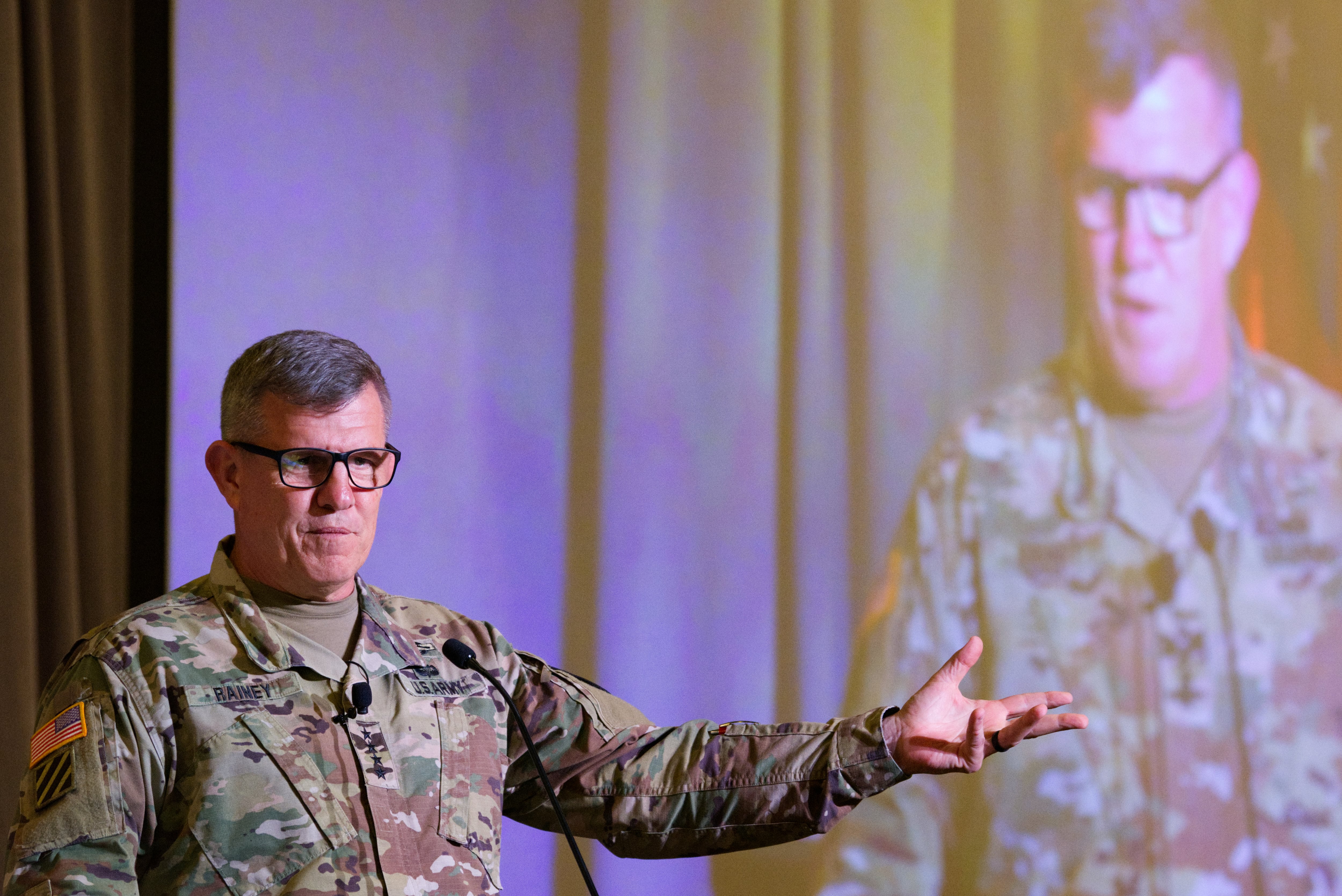AUGUSTA, Ga. — The idea of completely replacing soldiers, tanks and other familiar trappings of war with robots, autonomy and computer-derived strategy is misguided, according to the leader of U.S. Army Futures Command.
Instead, the military’s largest service should strive to strike a careful balance of human and machine, something Gen. James Rainey said is possible right now.
“As we go down this path, very aggressively, as fast as we can, we’ve got to make sure that we’re aiding commanders’ decision-making, not trying to make decisions for the commander, because that will be disastrous,” he said Aug. 17 at the AFCEA TechNet Augusta conference in Georgia. “I think what we need to do — and all this can be done today — is take the right combination of human beings and machines and build formations that optimize both.”
The Defense Department is heavily investing in artificial intelligence, machine learning and autonomy as demand mushrooms for speedier decision-making as well as longer-lasting and riskier intelligence gathering. At least 685 AI-tied projects were underway at the department as of 2021. More than 200 were attributed to the Army.
Robots and other machinery programmed to execute a mission, or with control beamed in from afar, could significantly reduce the risk to humans, potentially lessening casualties. Such technology could also allow the Army to reallocate valuable resources in the field, with menial or time-consuming tasks offloaded to digital or mechanized assistants.
“Capitalizing on the opportunities that exist by properly integrating the right combination of humans and machines increases lethality, increases survivability, drops weight, drops logistics tail. It lets us take our soldiers — that’s our most important weapon — and lets us optimize,” Rainey told reporters following his speech at the conference. “And if you look at what industry is doing, compared to what we’re doing, I think there’s just unlimited open-field running.”
As the leader of Army Futures Command, Rainey is among those spearheading the service’s development and adoption of cutting-edge tech in preparation for the next big fight. He has previously expressed interest in a cross-functional team dedicated to human-machine integration, or what he calls a “disruptive and evolutionary” field.
Existing teams are dedicated to improving connectivity, overhauling aviation, generating realistic simulation and training environments, and more.

“One of the indisputable big wins with AFC was the cross-functional teams,” Rainey said of his command. “As the things they work on transition over to our teammates at [the office of the assistant secretary of the Army for acquisition, logistics and technology] or Training and Doctrine Command, reloading those with the next three to five things is something I’m very interested in.”
The Army established a Contested Logistics Cross-Functional Team in Huntsville, Alabama, earlier this year. It is expected to be fully up and running in the coming months.
Army Materiel Command boss Gen. Charles Hamilton in March told Defense News autonomy could assuage the struggles posed by an opposing force targeting, harassing, and shutting down production and restocking efforts.
“For instance, no longer are the days when I could just — like I’ve done many times downrange — send convoys out to resupply. It’s too dangerous to do that,” Hamilton said at the time. “What we might do in the future is use an autonomous resupply of some kind. It might involve putting those supplies along the route that I know they have to support, unsecured, but I have sensors there that are able to say: ‘Hey, your operation has been compromised.’ ”
Colin Demarest was a reporter at C4ISRNET, where he covered military networks, cyber and IT. Colin had previously covered the Department of Energy and its National Nuclear Security Administration — namely Cold War cleanup and nuclear weapons development — for a daily newspaper in South Carolina. Colin is also an award-winning photographer.




